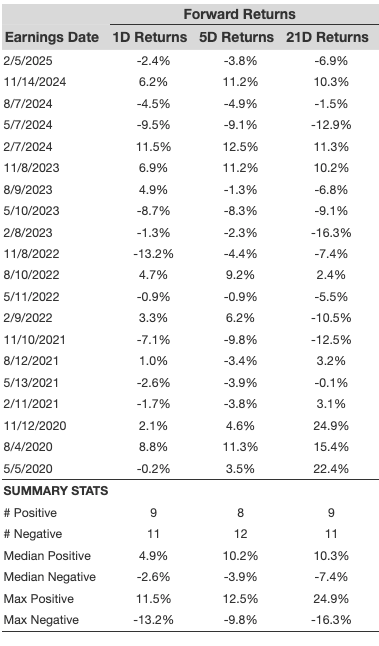Super Micro Computer Shares Tumble Amid Disappointing Earnings Forecast
Super Micro Computer, NASDAQ: SMCI, one of the year’s most volatile stocks, has seen its shares fall sharply following a pre-announcement of disappointing fiscal Q3 earnings results. The stock has lost approximately two-thirds of its value over the past year.
After a short report raised concerns about the company’s accounting practices and alleged misconduct, Super Micro has been on a volatile trajectory. The delays in its annual report, an investigation by the Department of Justice, and the resignation of its auditor have all contributed to a complex narrative around the company.
Now current with its filings, Supermicro is preparing to release its full results, which are expected to be disappointing. Below, a closer look at the company’s earnings announcement will help assess whether this represents a potential buying opportunity for investors.
Disappointing Results
For those unfamiliar, Super Micro is a hardware integrator that designs and assembles servers and rack solutions that include integrated networking, cooling, and power systems. It was among the pioneers of direct liquid cooling (DLC), a significant advancement in server technology. As server hardware tends to generate significant heat, particularly under artificial intelligence (AI) workloads, DLC offers advantages over traditional air cooling methods.
Primarily, Supermicro customizes its systems around Nvidia‘s graphics processing units (GPUs), positioning itself as a key original equipment manufacturer (OEM) partner for the chipmaker. Consequently, Supermicro has benefited from the burgeoning AI infrastructure market. Nevertheless, as a middleman integrator, the company operates in a low gross margin environment. The intense competition and commoditized nature of the field limit differentiation, with high component costs, such as GPUs, inflating revenues without significantly boosting gross profits.
In its fiscal Q4, ending June 2024, Supermicro’s gross margin dropped from 17% to 11.3%. To secure new design wins, the company had reduced prices, contributing to the margin squeeze. In fiscal Q2, the adjusted gross margin remained under pressure at 11.9%.
Recent results indicate the situation has worsened, with the gross margin expected to decline by 220 basis points from fiscal Q2, ultimately reaching just 9.7%. This decrease results from increased inventory reserves for older-generation products alongside pushing newer-generation products to customers. Additionally, customers are delaying their platform decisions, causing a shift in sales into fiscal Q4. This shift has prompted a revision of fiscal Q3 revenue forecasts, lowering them from a previous estimate of $5 billion to $6 billion to a new range of $4.5 billion to $4.6 billion.
Furthermore, the adjusted earnings per share (EPS) forecast has been revised from a range of $0.46 to $0.62 down to $0.29 to $0.31. In the previous year, the company reported adjusted EPS of $0.66 on revenue of $3.85 billion, indicating an 18% growth in sales while EPS appears poised for a decline.
| Metric | Prior FQ3 Guidance | New FQ3 Guidance |
|---|---|---|
| Revenue | $5 billion to $6 billion | $4.5 billion to $4.6 billion |
| Adjusted EPS | $0.46 to $0.62 | $0.29 to $0.31 |
Source: Company press release
The challenges Supermicro faces seem closely tied to customers transitioning to Nvidia’s new Blackwell chip. While Blackwell is capacity-constrained, clients appear willing to wait for the latest architecture rather than purchase servers that utilize older Hopper chips, leading to potential inventory buildup and future discounting.
This trend could be temporary. However, with Nvidia accelerating its new chip designs roughly every year, this issue may become more frequent. Supermicro will need to enhance its supply chain management to align inventory with demand during these transitional periods.

Image source: Getty Images
Is the Stock a Buy?
Supermicro’s forward price-to-earnings (P/E) ratio is under 12x based on this fiscal year’s estimates, suggesting that shares aren’t particularly expensive. However, the low gross margin and commoditized business model mean that the company has historically not commanded a large valuation multiple.
While Supermicro is still positioned to benefit from the AI infrastructure expansion, it must effectively manage its inventory and margin issues. The stock remains under scrutiny due to its past short allegations and filing delays.
Many AI stocks are currently appealing given recent market fluctuations, and there may be more favorable options to capitalize on the AI infrastructure trend.
Should You Invest $1,000 in Super Micro Computer Right Now?
Before considering an investment in Super Micro Computer, keep the following in mind:
The time-tested analyst team recently pinpointed the top 10 stocks for investors to buy now, and Super Micro Computer did not make the list. The featured stocks are believed to have significant potential for returns in the coming years.
Notably, back in December 2004, Netflix was featured on this list. An investment of $1,000 at that time would be worth $623,685 today. Similarly, Nvidia made this list in April 2005, and a $1,000 investment would now be valued at $701,781.
Overall, the average return from the featured list stands significantly higher at 906%, compared to 164% for the S&P 500.
Geoffrey Seiler has no position in any of the stocks mentioned. The Motley Fool has positions in and recommends Nvidia. The Motley Fool has a disclosure policy.
The views and opinions expressed herein are those of the author and do not necessarily reflect those of Nasdaq, Inc.

